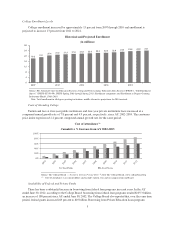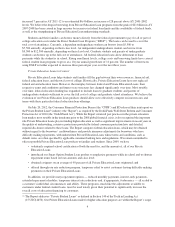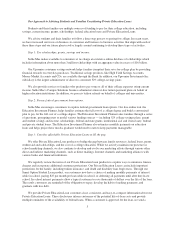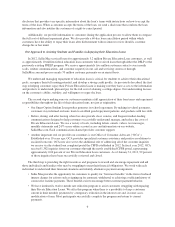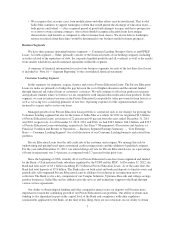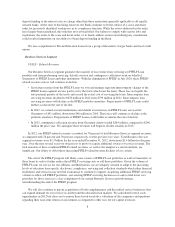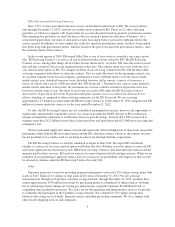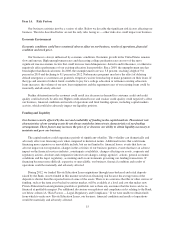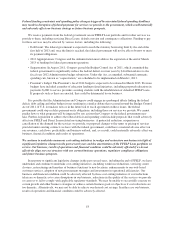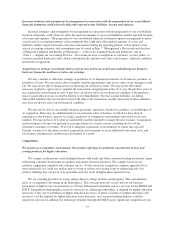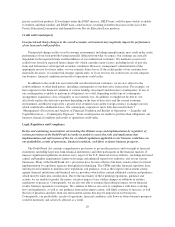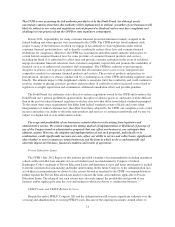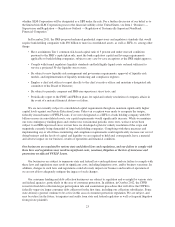Sallie Mae 2012 Annual Report Download - page 15
Download and view the complete annual report
Please find page 15 of the 2012 Sallie Mae annual report below. You can navigate through the pages in the report by either clicking on the pages listed below, or by using the keyword search tool below to find specific information within the annual report.Regulation of Systemically Important Non-Bank Financial Companies. As directed by the Dodd-Frank Act, on
April 3, 2012, the Financial Stability Oversight Council (“FSOC”) approved the final rule and interpretive guidance
it will use for designating non-bank financial companies as systemically important to the financial stability of the
United States and subject to supervision by the Board of Governors of the Federal Reserve System (the “FRB”)
under enhanced prudential supervision and regulatory standards. To be subject to FRB enhanced supervision, a non-
bank financial company’s material financial distress, its nature, scope, size, scale, concentration, interconnectedness,
or mix of activities, must pose a threat to the financial stability of the United States. For a further discussion of the
risks and implications of SLM Corporation being designated a Systematically Important Financial Institution
(“SIFI”), see Item 1A “Risk Factors — Legal, Regulatory and Compliance.”
The FSOC’s process for determining if a non-bank financial company’s distress could pose a threat to the
financial stability of the United States focuses on three criteria: the size, substitutability and interconnectedness
of the particular company. In the final rule, the FSOC provided guidance on the process they would use for
determining the SIFI designation. In Stage 1 of the process, the FSOC uses quantitative criteria to determine
which non-bank financial companies would be subject to a Stage 2 review, during which the FSOC conducts a
quantitative and qualitative review of publicly available information to determine whether there is a likelihood a
company could be a SIFI and meriting further review of the company’s nonpublic information. Under Stage 3 of
the process, the FSOC notifies the company and works with it to review additional information that may not be
available publicly and determines whether to make an official designation.
In the last quarter of 2012, the FSOC advanced several large non-bank financial companies to Stage 3 of the
process. SLM Corporation was not one of these companies. At the same time, the FSOC affirmatively decided
not to advance other Stage 2 non-bank financial companies to Stage 3 of the process.
While we have no way of knowing the qualitative judgments the FSOC will use in the future to determine if
SLM Corporation merits SIFI designation, and no assurances can be given, we continue to believe it is unlikely
the FSOC will determine SLM Corporation poses a threat to the financial stability of the United States. While
SLM Corporation meets certain criteria in Stage 1 of the FSOC’s rule, we see no changes that would warrant the
FSOC to consider us for SIFI designation due to the nature of the majority of financial assets on our balance
sheet, the minimal interconnectivity between our businesses and the financial economy of the United States or
the numerous sophisticated competitors who can provide substitute services to those we provide.
Oversight of Derivatives. The Dodd-Frank Act created a comprehensive new regulatory framework for
derivatives transactions, to be implemented by the Commodity Futures Trading Commission (the “CFTC”) and
the SEC. This new framework, among other things, subjects certain swap participants to new capital and margin
requirements, recordkeeping and business conduct standards and imposes registration and regulation of swap
dealers and major swap participants. The scope of potential exemptions remains to be further defined through
agency rulemakings. Moreover, while we may or may not qualify for exemptions, many of our derivatives
counterparties are likely to be subject to the new capital, margin and business conduct requirements.
Other Significant Sources of Regulation
Many aspects of our businesses are subject to regulation by federal and state regulation and administrative
oversight. Some of the most significant of these are described below.
We are subject to the HEA and, from time to time, our student loan operations are reviewed by ED and
Guarantors. As a servicer of federal student loans, we are subject to certain ED regulations regarding financial
responsibility and administrative capability that govern all third-party servicers of insured student loans. In
connection with our Guarantor servicing operations, we must comply with, on behalf of our Guarantor clients,
certain ED regulations that govern Guarantor activities as well as agreements for reimbursement between ED and
our Guarantor clients.
As a third-party service provider to financial institutions, we are also subject to examination by the Federal
Financial Institutions Examination Council (“FFIEC”). The Bank is subject to Utah banking regulations as well
13


